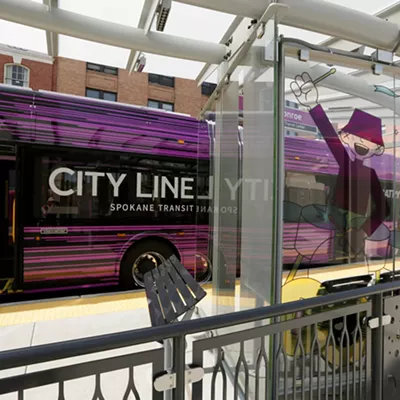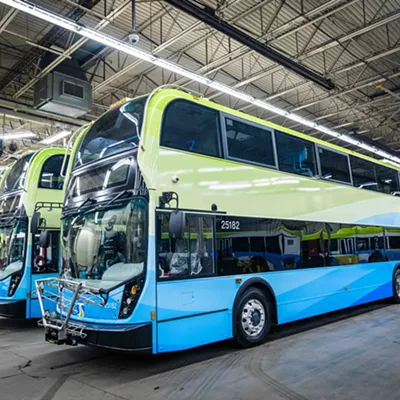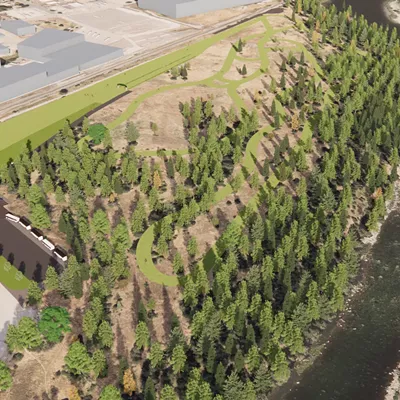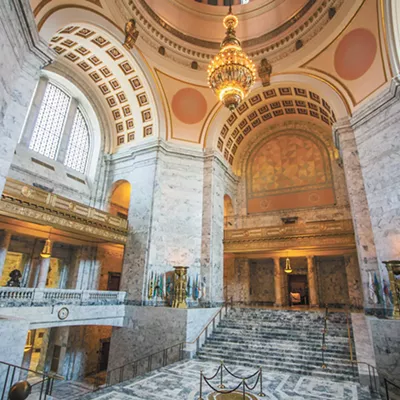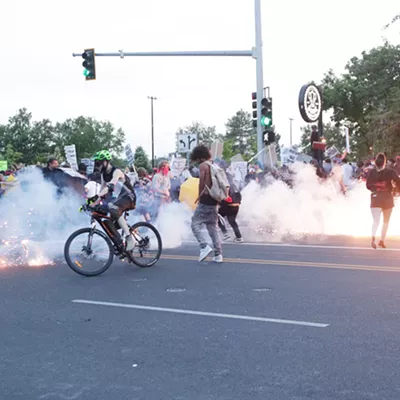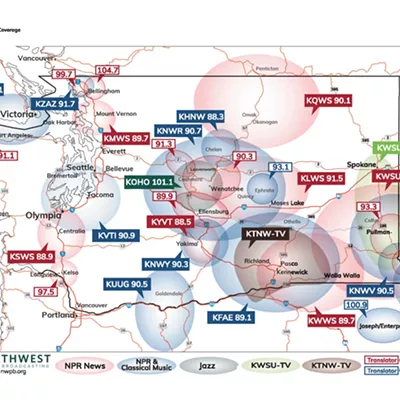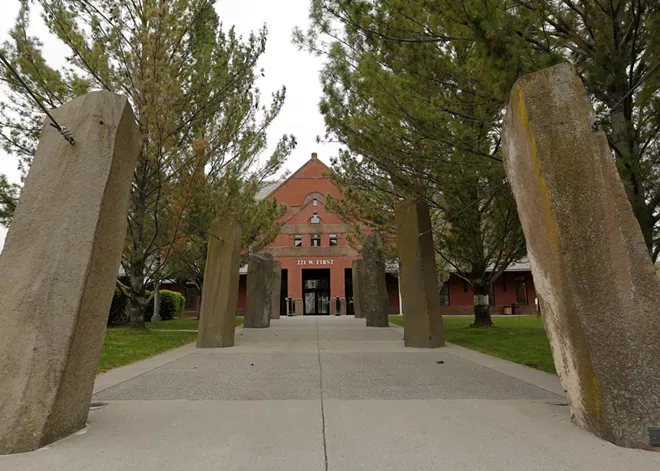
Railroad transportation may seem like a thing of the past — and that's because it is. Trains and their railway systems played a pivotal part in our nation's industrialization in the 1800s. But in the last century, the U.S. began investing heavily in other forms of transportation — namely motor vehicles and airplanes.
The shift in technology and governmental investments caused a swift decline in passenger and freight transportation, which led to bankruptcies and consolidations across the rail industry. Eventually, this led to the creation of Amtrak in 1971, a government-operated company charged with operating intercity passenger rail as a public service. By the 1980s, Amtrak was the sole long-distance passenger train operator in the U.S., and it still is.
Today, there are only 15 long-distance train routes in the country, and they don't even service every state in the mainland U.S. (Our condolences to Wyoming and South Dakota.) However, if a new plan from the Federal Railroad Administration (FRA) comes to fruition, folks can expect another 15 routes, more than doubling the mileage of Amtrak's current network.
Amtrak's footprint in the Pacific Northwest would also increase twofold.
Currently, two long-distance routes pass through Washington. The Empire Builder travels between Seattle and Chicago, while the Coast Starlight travels between Seattle and Los Angeles. The proposal includes two more long-distance routes: one between Seattle and Denver and the other between Seattle and Chicago, the latter departing from the Empire Builder route by traversing southern Montana.
This expansion plan was included in the 2021 Bipartisan Infrastructure Law that authorized up to $108 billion for public transportation in the U.S., with more than $8 billion going toward passenger rail projects. As part of this law, the FRA was required to evaluate possible restoration of daily intercity rail passenger service along Amtrak's long-distance routes that have either been discontinued or only run on a nondaily basis.
Among other things, the FRA study looked at rural communities that aren't served by existing routes, filling gaps in the current infrastructure, and connecting small and large communities that weren't already connected.
Officials released their long-distance expansion plan earlier this month, and plan to present it to Congress this spring.
'WE'RE BEHIND'
If this expansion plan is adopted by Congress as proposed, Amtrak's total long-distance route miles would increase from 21,900 miles to 45,100 miles. Of the additional 23,200 miles proposed, 5,900 miles come from discontinued routes, 11,100 miles come from new segments and 6,200 miles are in Amtrak's current Baseline Network, according to the study.
The FRA anticipates that this expansion plan would serve 27 million people across the country who live in rural areas and are below the poverty line. Additionally, they predict that up to 4 million people living on tribal lands would also benefit from an increase in routes.
State Rep. Marcus Riccelli, D-Spokane, who previously served on the Washington House Transportation Committee, says he supports increased long-distance passenger rail services and thinks it would benefit the Inland Northwest.
"It would bring a lot of economic value for our community," he says. "It's safe, reduces our impact on the environment, and it's cost affordable."
However, Riccelli believes the U.S. is lagging when it comes to railway transportation.
"I think it's fundamentally flawed when you look at our [railway system] compared to other countries," he says. "I feel like we're behind."
The study will demonstrate the economic and social benefits of new and restored Amtrak service and provide guidance on implementation, FRA spokesperson William Wong told the Montana Free Press.
As it's now written though, the plan only identifies the things that would incur costs rather than provide any actual estimate of how much it would cost to expand the Amtrak network. These costs are sorted into different categories like stations and terminals, vehicles, and professional services.
The plan, however, does provide abundant examples of the potential social benefits — mainly, more people will be able to use rail transportation to reach more places (including Wyoming and South Dakota).
In total, Amtrak would be able to serve up to 292 million people nationwide, according to the FRA Long-Distance Service Study. That's about 88% of the population, up from the 74%, or 247 million people, that's currently served under Amtrak's existing routes.
These millions of potential passengers would then be connected to 91% (3,300) of the nation's higher education institutions and 86% (584) of all medical centers in the U.S. They'd also be connected to 75 national parks, recreation areas and preserves under the National Park Service.
Some of the proposed routes would streamline travel to specific places. For example, using today's system to get to Denver from Seattle, you'd have to ride the Coast Starlight to Sacramento, California, and then hop on another route, the California Zephyr, from Sacramento to Denver. In total, you'd be traveling for about 56 hours, or more than two days.
The proposed route between Seattle and Denver in the expansion plan is estimated to take about 40 hours and allows passengers to stay on the same train their whole journey.
Alternatively, the Seattle to Chicago route is estimated to take 50 hours, but won't save anyone any time as there's already a direct route in service. Instead, it works to reconnect communities in southern Montana to the rail system.
TWO NEW-ISH ROUTES
Neither of the proposed routes in the Pacific Northwest are necessarily new. Both would follow routes that were previously discontinued, reconnecting communities that haven't had access to long-distance rail travel in decades.
The addition of another Seattle-Chicago route would effectively restore the North Coast Hiawatha, which was eliminated in 1979 — eight years after Amtrak was founded.
The route was discontinued because of its cost to taxpayers, then-U.S. Transportation Secretary Brock Adams said at the time. It cost $24 million to run in 1978 and only brought in $6 million from passengers, leaving U.S. taxpayers on the hook for about $18 million, the Spokesman Review reported in 1979.
"It would be cheaper to buy every Chicago-Seattle rail passenger a free $170 plane ticket and two drinks than it is to operate the Hiawatha," Adams said.
Today, a one-way flight from Seattle-Tacoma International Airport and Chicago's O'Hare International Airport costs about $300.
The Hiawatha route would include Inland Northwest stops in Yakima, Kennewick, Spokane and Sandpoint. In Montana, the route would hit some of the state's most-populous cities, like Missoula, Bozeman, Helena and Billings.
"There's a lot of momentum building behind restoring this route," Big Sky Passenger Rail Authority Vice Chair and Dawson County Economic Development Council member Jason Stuart told Montana Free Press.
"In terms of connecting rural, disadvantaged communities and tribal communities, it shows the best performance metrics of any of the routes in achieving those goals," Stuart said. "This is going to be such an enormous boost for rural communities to have this service restored."
The route that connects Seattle to Denver would effectively replace a portion of the former Pioneer route. This route originally operated for 20 years between Seattle and Chicago before being eliminated in 1997.
This would reconnect service to Boise and Pocatello in Idaho and to Ogden, Utah, which sits between Pocatello and Salt Lake City.
These routes likely wouldn't begin until 2040, according to a 15-year timeline presented by the FRA. The first eight years would entail project planning and then project development. The next six years would be spent on design finalization and construction with operations slated to start on the 15th year. ♦




